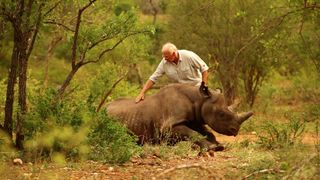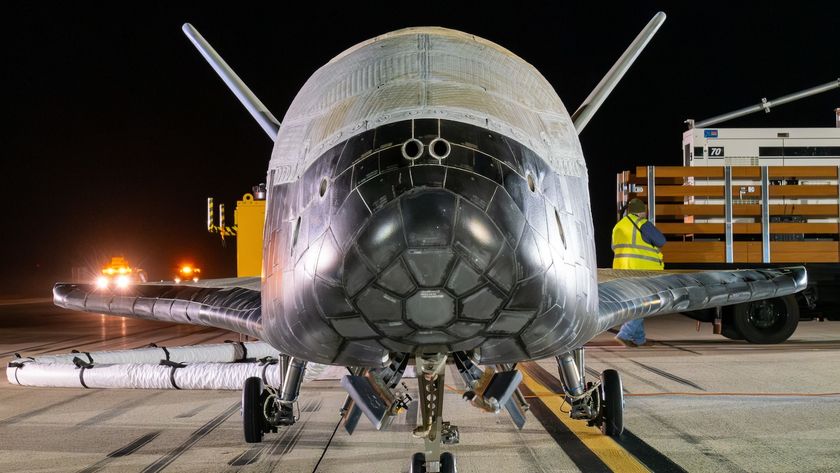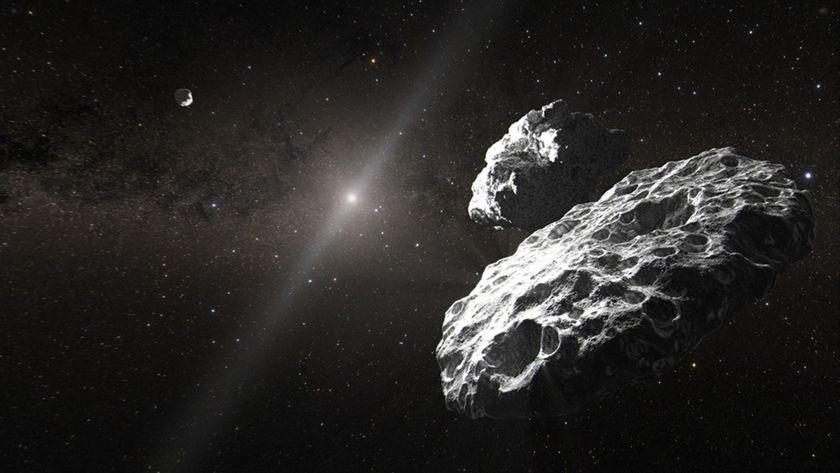Up and Away! Photos of Rhinos in Flight
Rhino in Flight

Suspended from a helicopter, a critically endangered black rhino (sedated) takes a 10-minute flight to a vehicle destined for a new habitat safe from poachers.
Trussed-Up Rhino

Suspending the rhinos from their ankles is the safest way for them to travel, according to the World Wildlife Foundation in South Africa, which oversees the rhino transfer program. Trucks are too slow, and suspending the animal in a net from a helicopter can interfere with its breathing.
Rhino in the Sky

The rhinos were taken on 10-minute flights to nearby trucks that would transfer them to new habitats.
Rhino Silhouette

A sedated rhinoceros silhouetted against the South African sky.
Rhino Transport

The WWF team moved the animals to a protected habitat in northern South Africa.
Wake Up, Rhino

Jacques Flamand of WWF’s Black Rhino Range Expansion Project administers the antidote to wake up a black rhino which has just been released to a new home after an epic 930 mile (1500 kilometer) journey.
Sleeping Rhino

A team of conservationists works on a sedated black rhino.
Sign up for the Live Science daily newsletter now
Get the world’s most fascinating discoveries delivered straight to your inbox.
Rhino on the Ground

Poachers target the rhinos for their horns, which bring a high price on the black market.
Strapping In

In the 1990s, the population of wild black rhinos was only about 2,000 individuals strong. This crisis situation has triggered efforts to relocate individuals to safe habitat, expanding their range. The hope is that the animals will breed quickly in their new homes.
Clearing the Trees

A rhino takes flight.
Up, Up and Away

The WWF rhino project has relocated almost 120 individuals since 2003.

Stephanie Pappas is a contributing writer for Live Science, covering topics ranging from geoscience to archaeology to the human brain and behavior. She was previously a senior writer for Live Science but is now a freelancer based in Denver, Colorado, and regularly contributes to Scientific American and The Monitor, the monthly magazine of the American Psychological Association. Stephanie received a bachelor's degree in psychology from the University of South Carolina and a graduate certificate in science communication from the University of California, Santa Cruz.










